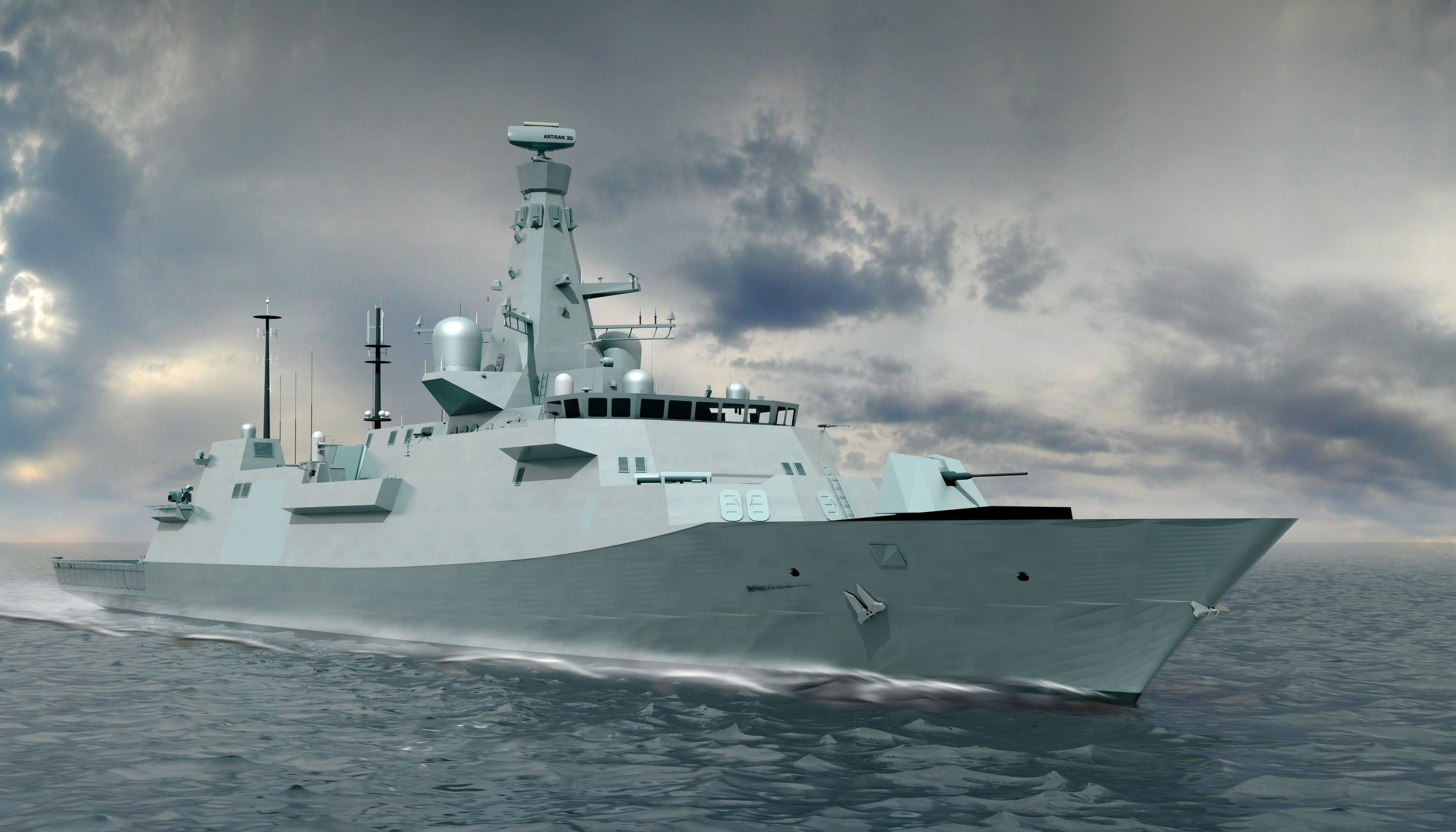
THE first warship in a new fleet of Royal Navy frigates will be called HMS Glasgow, the Defence Secretary has announced.
Sir Michael Fallon revealed the name as he cut the ship’s first piece of steel at the BAE Systems shipyard in Govan, Glasgow on Thursday.
Earlier this month a £3.7 billion contract was signed with BAE Systems to build the first three warships in the new eight-strong fleet of City class Type 26 frigates, sustaining 1,700 jobs in Scotland for two decades.
Together the three ships being built under the first contract will safeguard 4,000 jobs in Scotland and across the wider UK supply chain until 2035, the Ministry of Defence (MoD) said.
Sir Michael said: “Today marks a historic milestone for the Royal Navy, Scottish shipbuilding and UK defence more widely.
“HMS Glasgow and the other seven frigates in this new class will protect our powerful new aircraft carriers and nuclear deterrent, helping keep Britain safe across the world.
“The Type 26 is a cutting-edge warship that will maintain our naval power with a truly global reach. Designed for a service life of at least 25 years, the Type 26 frigates will form a backbone of the future Royal Navy surface fleet well into the future.”
Good luck to my old Clydeside colleagues today as they cut steel on the first Type 26 Frigate. Proud to have played a part in this milestone pic.twitter.com/044g3yks8C
— Paul Sweeney MP (@PaulJSweeney) July 20, 2017
The ships will specialise in anti-submarine warfare and work closely with the Navy’s Trident nuclear deterrent and the new aircraft carriers, the first of which – HMS Queen Elizabeth – launched from Rosyth in late June for sea trials.
HMS Glasgow will enter service in the mid 2020s.
The fleet will eventually replace the current Type 23 frigates.
Admiral Sir Philip Jones, First Sea Lord and Chief of the Naval Staff, said: “The Clyde was the birthplace of some of the greatest fighting ships the world has ever known, and so cutting steel there today for the future HMS Glasgow is symbolic of a Royal Navy on the rise once again.
“As an island nation, we are utterly dependent on the sea for our security and prosperity, and the City-class names have been chosen for the Type 26 to provide an enduring link between the Royal Navy and our great centres of commerce and industry.
“The name Glasgow brings with it a string of battle honours, stretching from the Arctic Circle to the South Atlantic. As one of the world’s most capable anti-submarine frigates, the Type 26 will carry the Royal Navy’s tradition of victory far into the future.”
The contract for the second batch of five ships will be negotiated in the early 2020s.

Enjoy the convenience of having The Sunday Post delivered as a digital ePaper straight to your smartphone, tablet or computer.
Subscribe for only £5.49 a month and enjoy all the benefits of the printed paper as a digital replica.
Subscribe